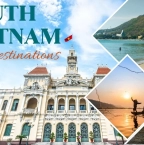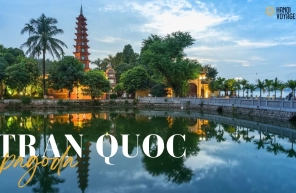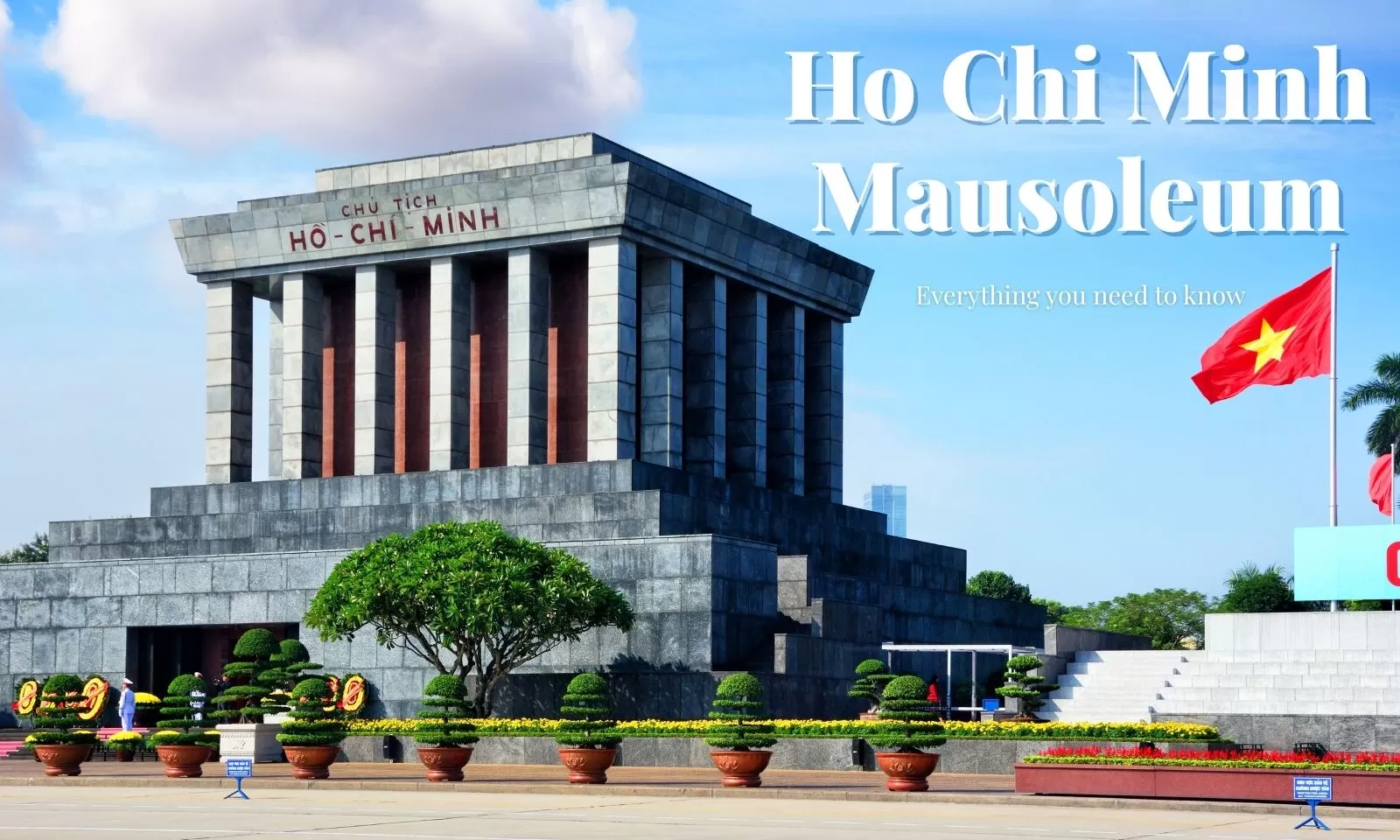
Ho Chi Minh Mausoleum: Everything you need to know

Located in the historic Ba Dinh Square in Hanoi, the Ho Chi Minh Mausoleum, also known as the Uncle Ho Mausoleum, is the burial place of the beloved father of the nation, President Ho Chi Minh. The Uncle Ho Mausoleum is not only a unique architectural work but also a sacred historical site, attracting a large number of domestic and foreign tourists to visit and express their respect and gratitude to Uncle Ho. If you have a trip to Vietnam and have the opportunity to come to Hanoi, do not miss this majestic historical site.
Let Hanoi Voyages accompany you on a meaningful journey to the Ho Chi Minh Mausoleum and other historic landmarks in Hanoi, where culture and history come alive.
Table of Contents
Ho Chi Minh Mausoleum: A symbol of national pride
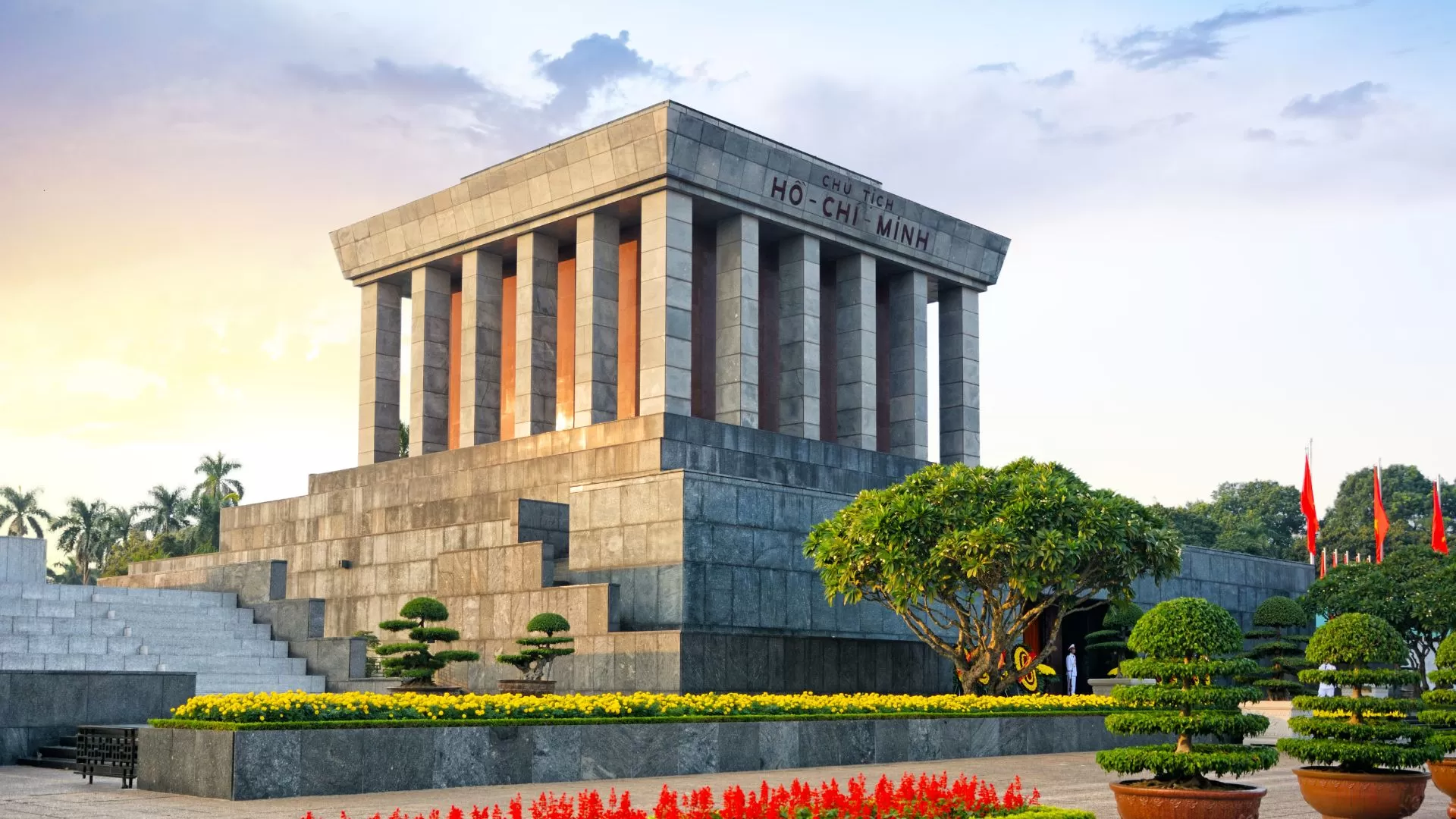
📍Location: No. 2 Hung Vuong Street, Dien Bien Ward, Ba Dinh District, Hanoi
When visiting Hanoi, both Vietnamese and international tourists often look forward to visiting the Ho Chi Minh Mausoleum – a site of immense historical and cultural importance, and one of the most iconic landmarks in the capital city.
History of construction
Date of President Ho Chi Minh’s passing: September 2, 1969
Following his death, the Political Bureau of the Party Central Committee decided to preserve his body and construct a mausoleum so future generations could come to pay their respects.
Construction began: September 2, 1973, at the location of the former grandstand in the middle of Ba Dinh Square.
Completion and inauguration: After two years of urgent construction, with support from the Soviet Union and contributions from across the country, the mausoleum was completed and officially inaugurated on August 29, 1975.
According to President Ho Chi Minh’s will, he wished to be cremated and for his ashes to be placed in the North, Central, and South regions of Vietnam.
However, in accordance with the heartfelt wishes of the Party and the people, his body was preserved and the mausoleum was built in Ba Dinh Square, the very place where he had solemnly declared the independence of Vietnam.
Majestic architecture of the Ho Chi Minh Mausoleum
More than just a memorial, the Ho Chi Minh Mausoleum is a testament to national pride, resilience, and a deep-rooted cultural identity. Its design is both modern and traditional, reflecting Vietnam’s spirit of harmony between past and present.
A harmonious blend of strength and elegance
The mausoleum stands tall in a dignified gray hue that evokes silence and respect. Built with modern engineering techniques while embracing Vietnamese architectural traditions, the structure gives off an air of majesty and endurance. Remarkably, the building is engineered to withstand earthquakes, bombings, and floods - up to a magnitude of 7.0 - highlighting the immense care and foresight put into its construction.
The foundation: A symbol of stability
The mausoleum is elevated on a tall, square pedestal, symbolizing stability and permanence. The entire base is clad in gray marble, giving the foundation a solid yet elegant look. A series of steps lead up to the main hall, guiding visitors into the heart of the structure.
The central part of the Mausoleum
This part of the mausoleum is a rectangular block, measuring 21.6 meters in height and 41.2 meters in width. All four sides are faced with green Thanh Hoa stone, known for its subtle beauty and durability. The clean lines and solid form reflect the dignity and simplicity associated with President Ho Chi Minh himself.
The roof: Where symbolism shines
The roof of the mausoleum continues the geometric theme with a square shape assembled from 144 panels of blue stone, also from Thanh Hoa. At the pinnacle sits a five-pointed bronze star, a powerful symbol of socialist ideals and national unity. It serves as a beacon of the values that President Ho Chi Minh dedicated his life to.
A lasting tribute
The Ho Chi Minh Mausoleum is more than a historical site - it’s a place where architecture, memory, and meaning converge. Whether you’re an admirer of architecture, a history enthusiast, or a curious traveler, standing before the mausoleum offers a chance to reflect on the enduring legacy of one of Vietnam’s greatest leaders.
Ho Chi Minh Mausoleum: Sacred symbols of the Vietnamese people
The Ho Chi Minh Mausoleum is not just a historical landmark but a sacred space that holds deep meaning for the Vietnamese people. It reflects national pride, unity, and the enduring legacy of President Ho Chi Minh—affectionately known as "Uncle Ho."
A pure and peaceful space
From the moment you enter the mausoleum grounds, a sense of calm and reverence fills the air. Whispering rows of untamed bamboo, towering majestic cycads, and blooming colorful flowers line the paths, creating a tranquil and harmonious setting. The atmosphere is pure and peaceful, offering visitors a moment of reflection amid nature and history.
Historic Ba Dinh square

The mausoleum is located in the heart of Ba Dinh Square, where Vietnam’s most significant historical event took place — the reading of the Declaration of Independence on September 2, 1945, by President Ho Chi Minh himself. This very square continues to serve as a gathering place for national pride and remembrance.
Every day, Ba Dinh Square becomes the setting for the flag-raising ceremony at 6:00 a.m. and the flag-lowering ceremony at 9:00 p.m. These solemn rituals are conducted by the Pepper Soldiers and Red Flag Soldiers, accompanied by the stirring sound of the national anthem. On special occasions—such as National Day (September 2) or Uncle Ho’s birthday (May 19)—these ceremonies take on even greater significance, drawing both locals and visitors to witness the heartfelt tribute.
You can also refer: Festivals In Hanoi: Top 6 Traditional Festivals Should Visit
Where the great leader rests
Inside the mausoleum lies the embalmed body of President Ho Chi Minh. It rests in a rosewood coffin placed atop a marble pedestal, bathed in soft light from four eternal oil lamps, symbolizing the everlasting presence of the beloved leader.
Visitors from across Vietnam and around the world come here to pay their respects. The solemn atmosphere, the respectful silence, and the dignified setting all reflect the immense love and gratitude the Vietnamese people continue to hold for Uncle Ho.
The Ho Chi Minh Mausoleum is more than a final resting place. It is a sacred symbol of Vietnam’s struggle for independence, a reminder of the values of patriotism, resilience, and unity. It stands as a monument not only to one man’s legacy but to a nation's spirit. For those who visit, it is both a historical journey and a deeply moving experience—one that honors the father of modern Vietnam and his lifelong dedication to the people.
Rules and etiquette when visiting the Ho Chi Minh Mausoleum
Visiting the Ho Chi Minh Mausoleum is a solemn and meaningful experience for both Vietnamese citizens and international visitors. As this is a sacred site where the body of President Ho Chi Minh is preserved, certain rules and customs must be followed to show respect. Whether you're coming to learn about history, pay tribute, or simply explore Hanoi's cultural landmarks, understanding the regulations beforehand will ensure a smooth and respectful visit.
Dress modestly and respectfully
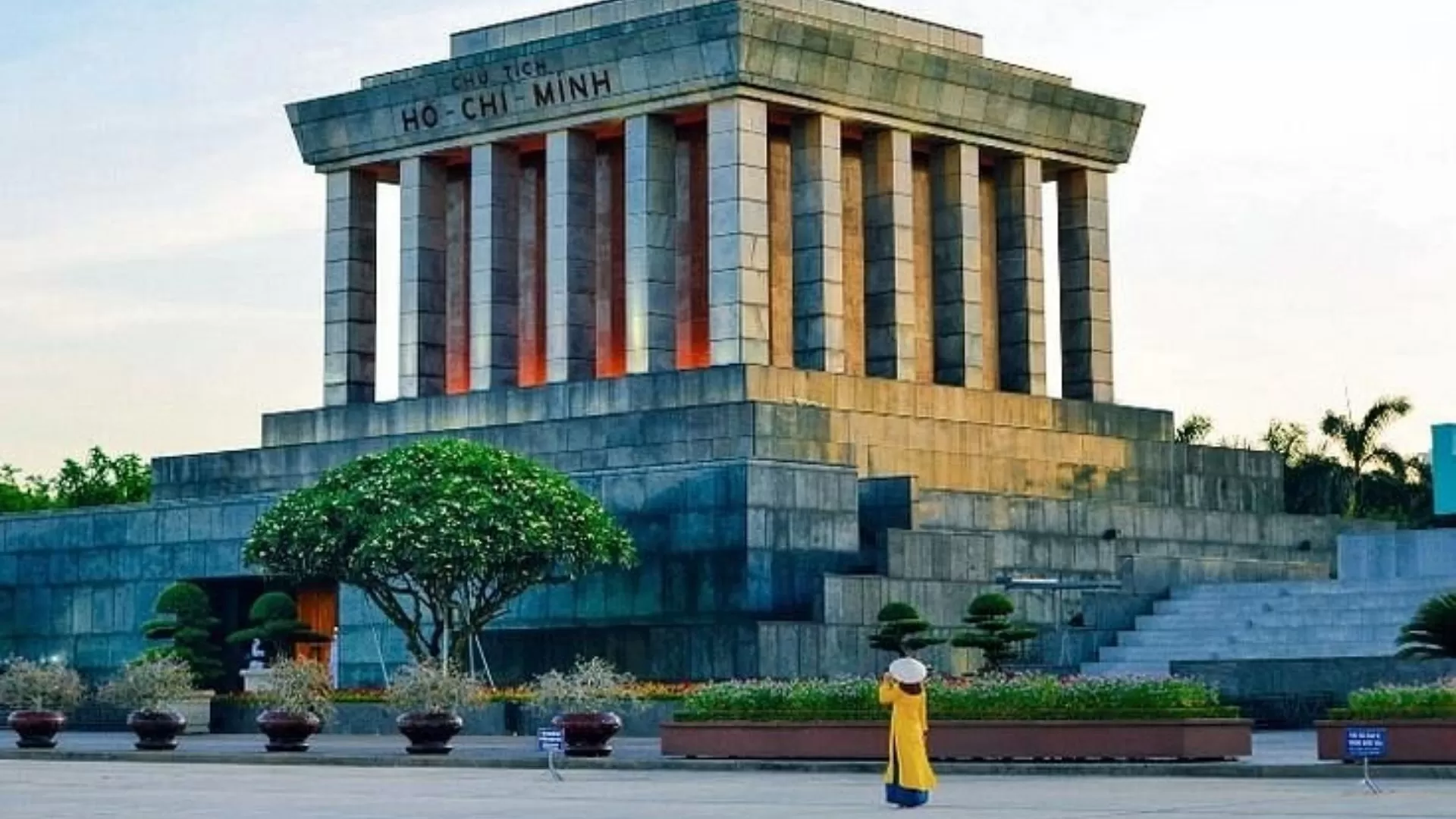
Visitors are required to wear modest clothing when entering the mausoleum. Avoid sleeveless tops, shorts, short skirts, or anything revealing. This dress code reflects respect not only for President Ho Chi Minh but also for Vietnamese cultural values.
Keep a quiet and respectful manner
Inside the mausoleum and its surrounding areas, silence is expected. Talking, laughing, loud noises, or using your phone is considered disrespectful. This is a place of remembrance and national reverence.
Do not speak loudly or make jokes
Avoid running or making sudden movements
Refrain from chewing gum or eating
No photography or filming inside the mausoleum
Taking photos or videos inside the building where President Ho Chi Minh rests is strictly prohibited. Security personnel are present throughout the premises, and any attempt to record may result in confiscation of your equipment.
You may, however, take pictures outside the mausoleum, such as in Ba Dinh Square, near the lake, or around the gardens.
Follow the queuing system

Visitors enter the mausoleum in a strict line, guided by guards. The queue moves continuously and in an orderly manner. Do not stop, step out of line, or walk ahead of others. Even during busy periods, patience and discipline are expected from all visitors.
Bag checks and security procedures
Before entering, all visitors must go through a security check. Bags, water bottles, and metal objects may be screened or asked to be left outside. It's best to travel light.
Visiting hours and closure days
The mausoleum is open in the mornings only, usually from 7:30 a.m. to 10:30 a.m. (depending on the season). It is closed on Mondays and Fridays.
Tip: Arrive early, especially on weekends or national holidays, as lines can be long.
Show respect during flag ceremonies
If you visit around 6:00 a.m. or 9:00 p.m., you may witness the solemn flag-raising or flag-lowering ceremony at Ba Dinh Square. Visitors are expected to stand still, remove hats, and show respect as the national anthem plays.
👉 Ready to explore the best of Vietnam? Let Hanoi Voyages craft a fully customized itinerary tailored to your pace and interests. Contact us now and start planning your unforgettable journey to Vietnam!
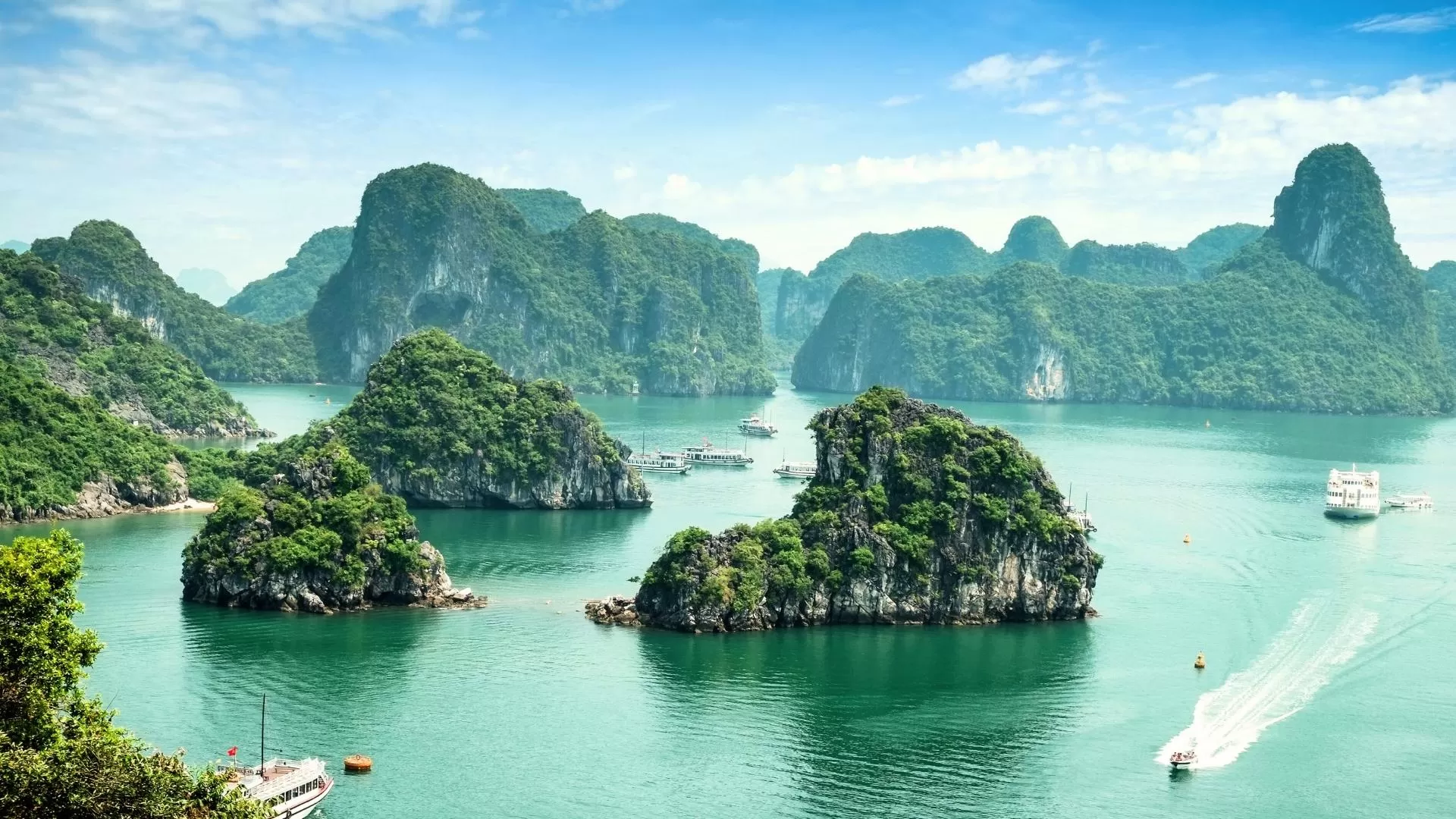 | 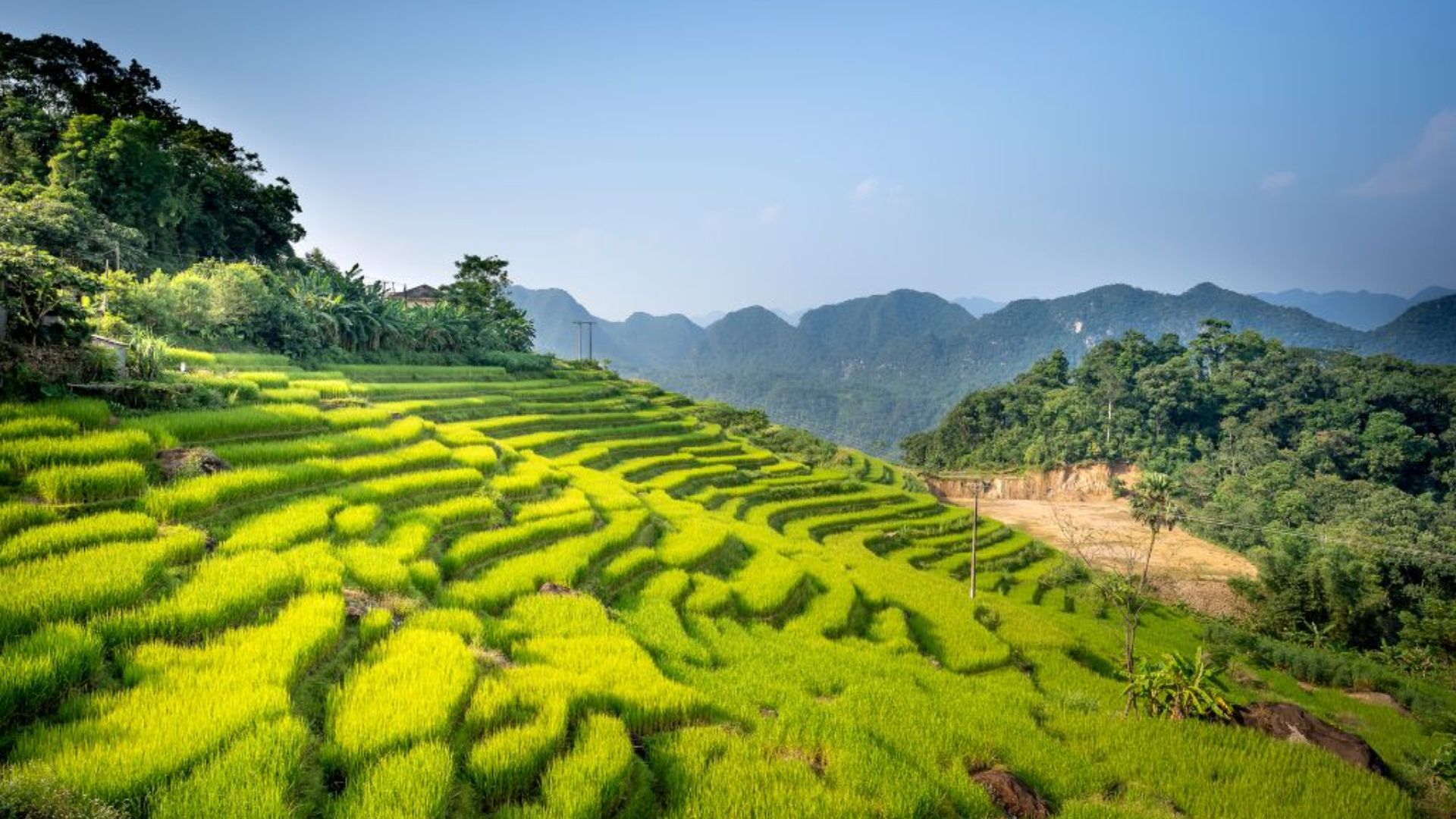 |  |
Featuring a seaplane ride over stunning Halong Bay and luxurious regional experiences | Discover UNESCO sites and the Pu Luong Reserve. Enjoy a diverse adventure that's perfect for all ages | Exploring Halong Bay, Phong Nha, the Mekong Delta,... Experience culture, adventure landscapes! |
Top attractions near the Ho Chi Minh Mausoleum
Within the grounds of the Ho Chi Minh Mausoleum, you’ll find several important sites deeply connected to the life of President Ho Chi Minh, including:
The Presidential Palace
Uncle Ho’s Fish Pond
His Stilt House
The Ho Chi Minh Museum
These places offer valuable insight into Uncle Ho’s simple lifestyle and the historical context of Vietnam's revolutionary period.
Beyond the complex, Hanoi’s historic and cultural core continues to unfold. Many famous landmarks are located within just a few kilometers of the mausoleum:

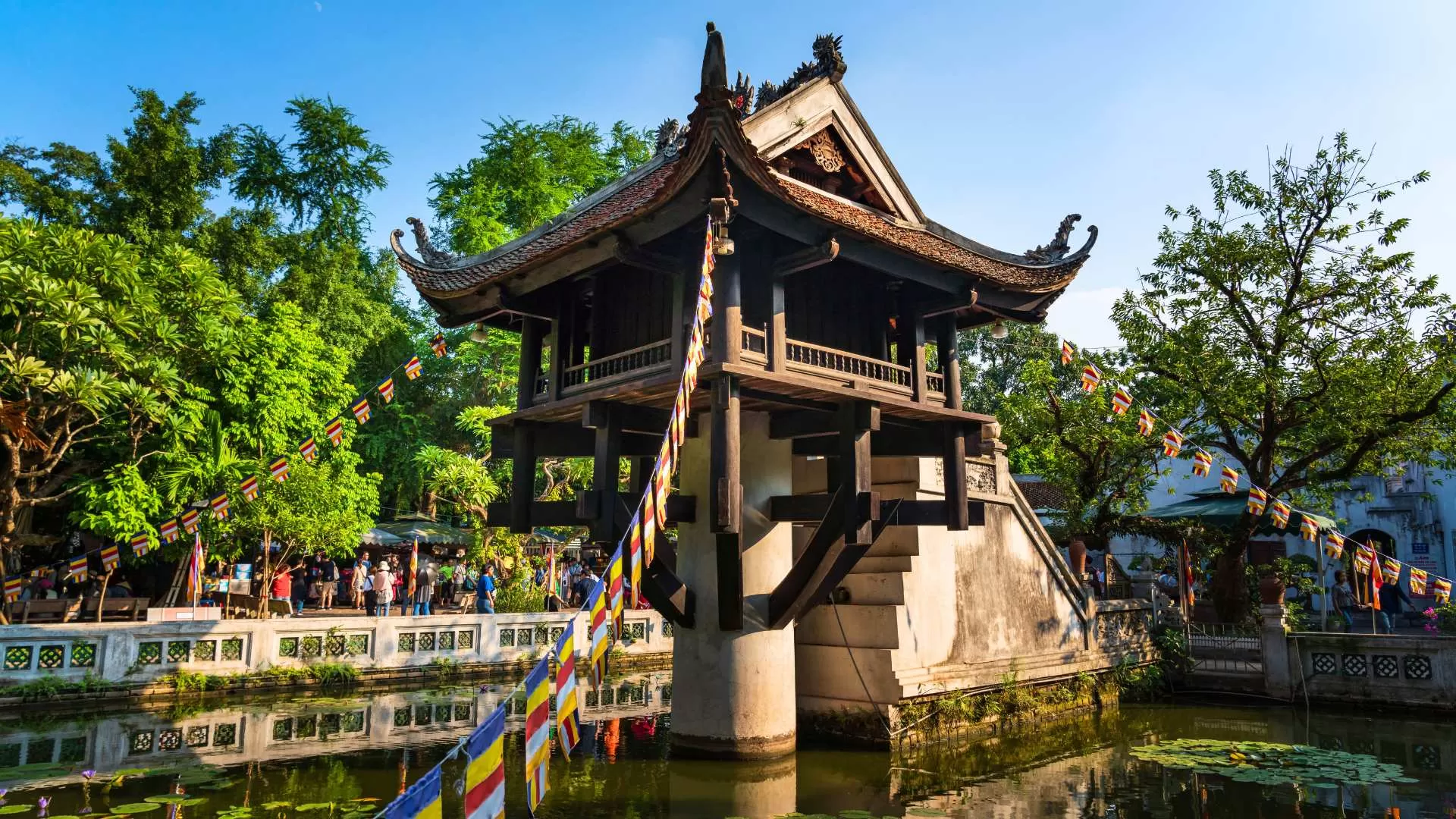
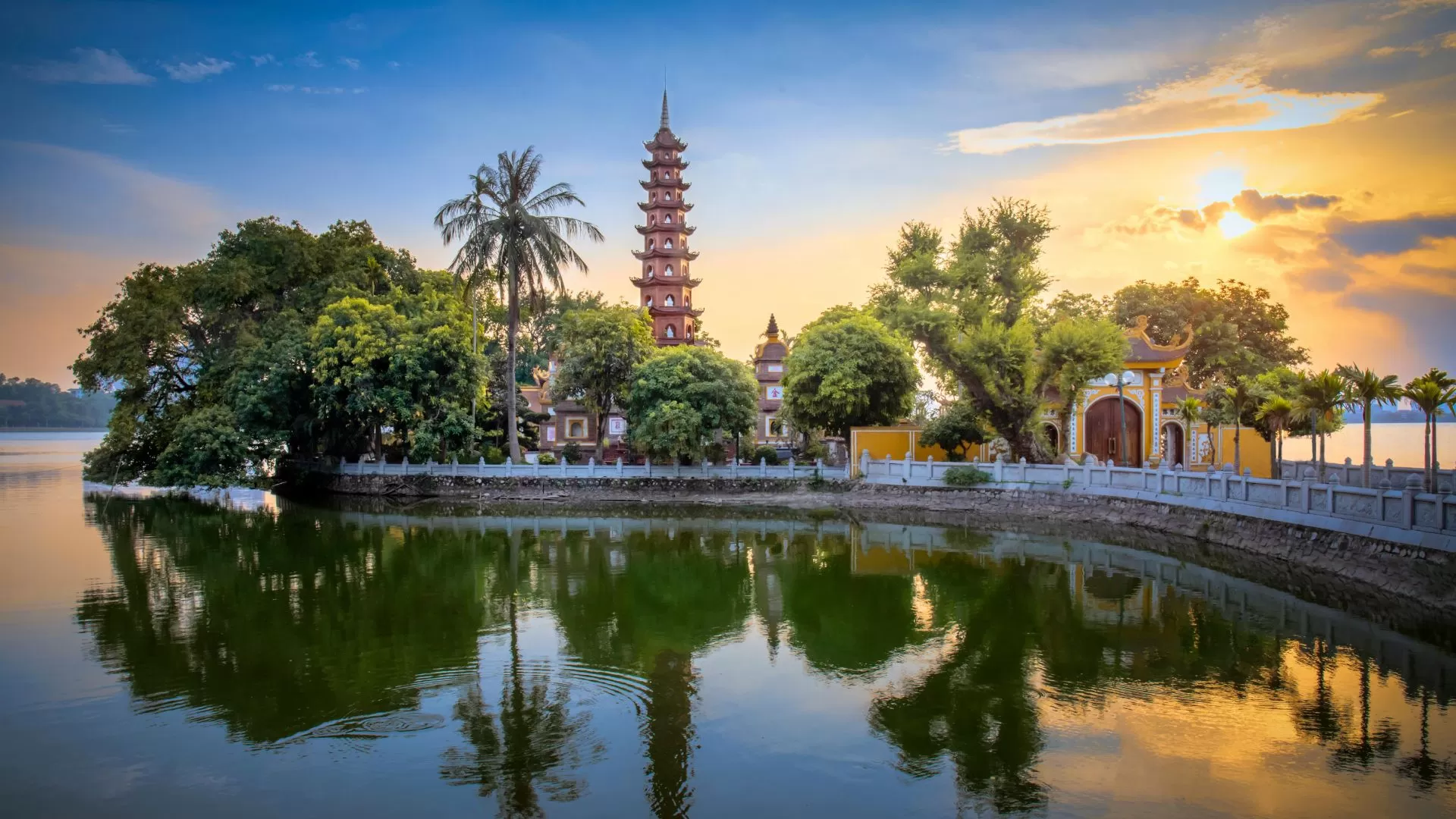
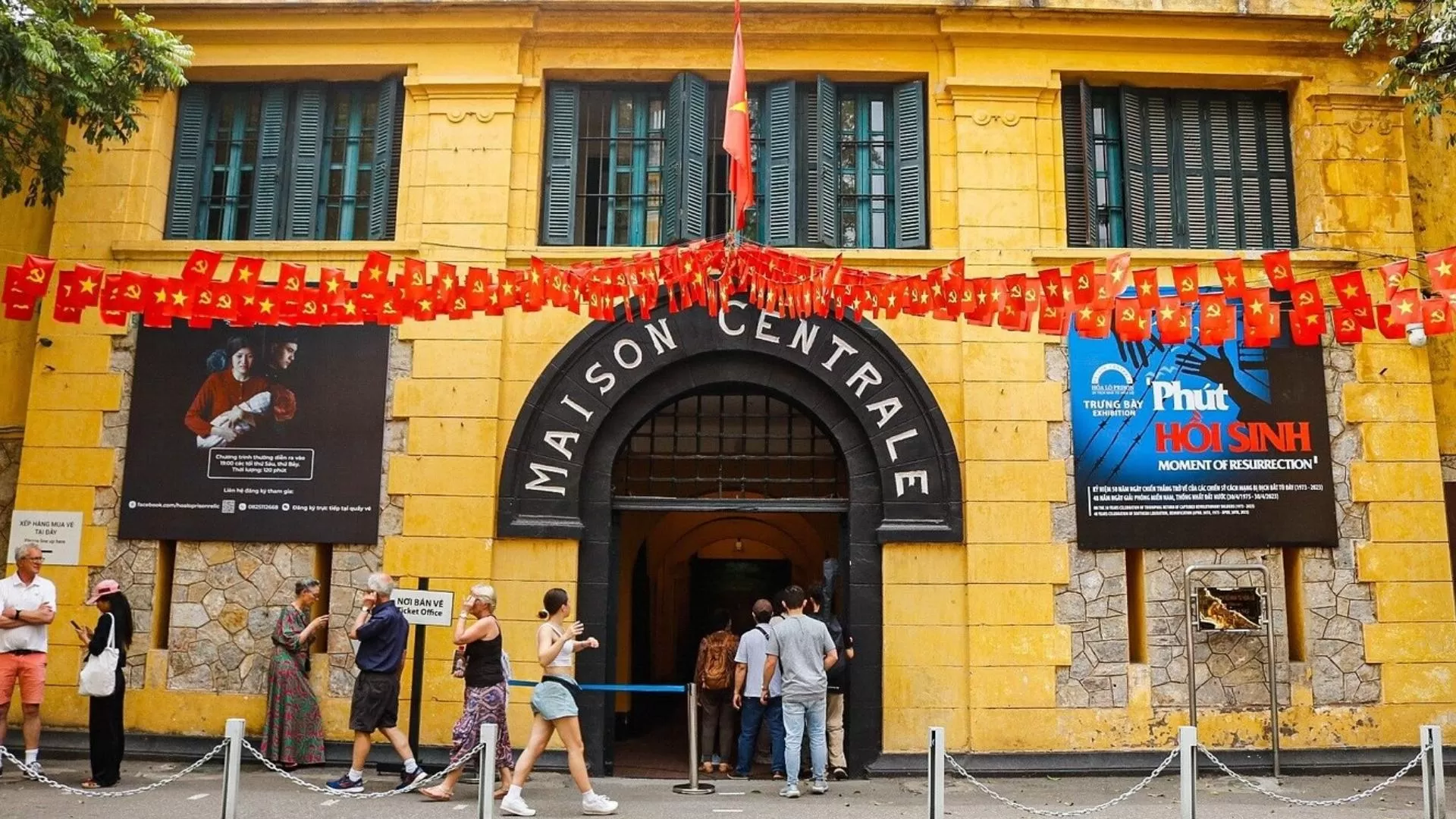

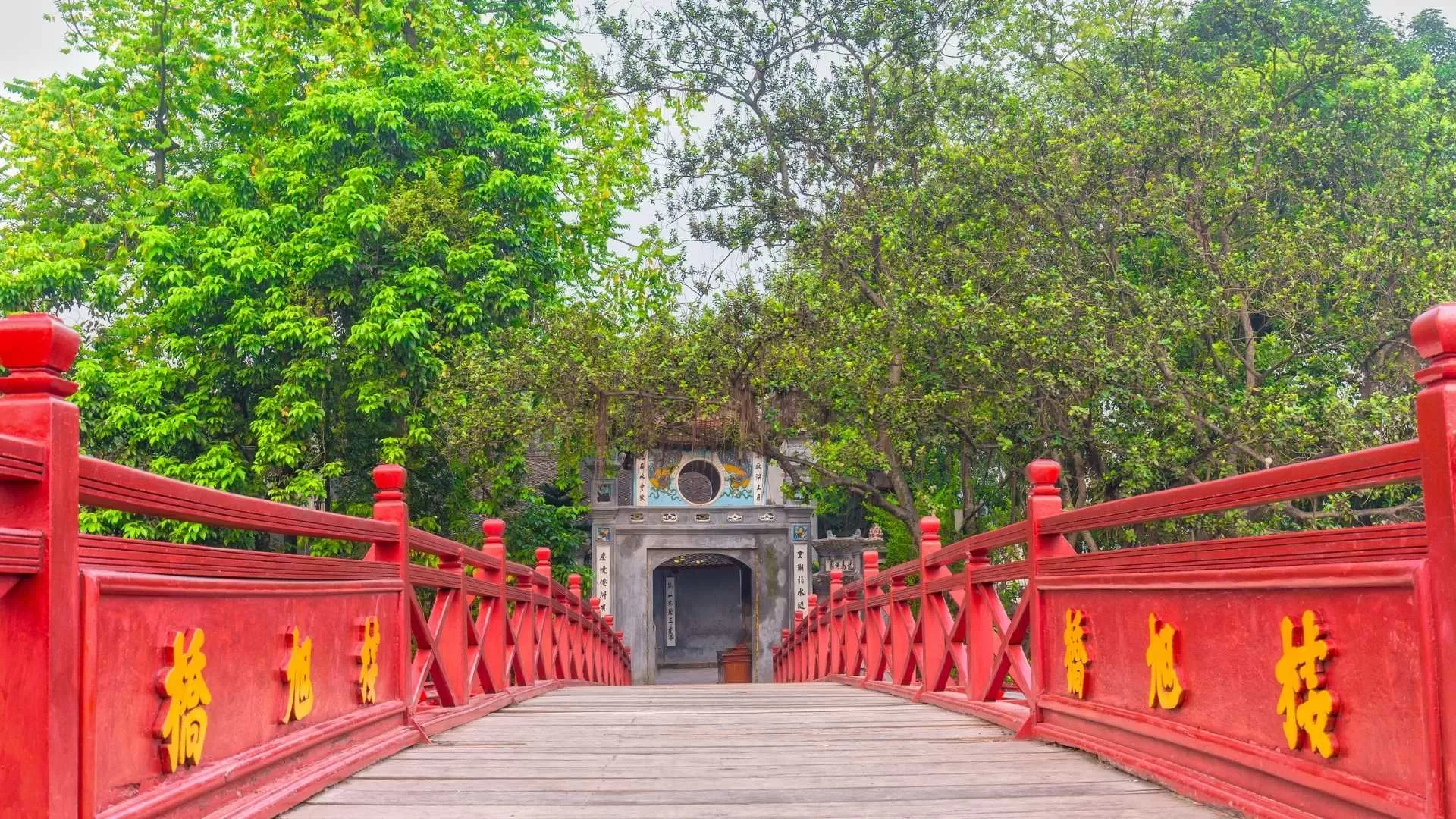
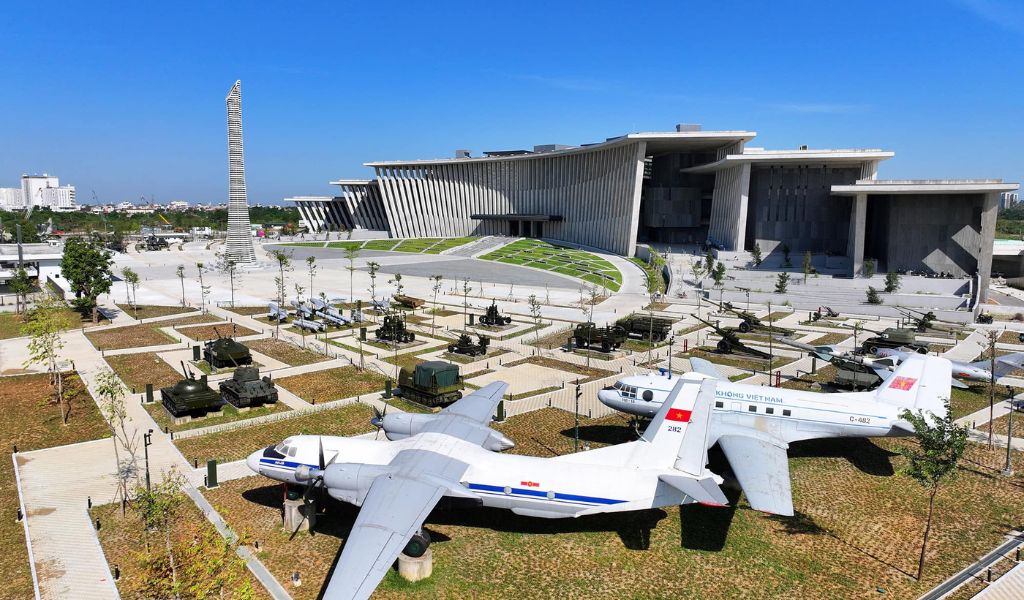
Imperial Citadel of Thang Long – 1.3 km
Vietnam Military History Museum – 1.6 km
Tran Quoc Pagoda – 2.1 km
Temple of Literature (Van Mieu) – 2.2 km
Hoa Lo Prison (Maison Centrale) – 2.3 km
St. Joseph's Cathedral – 2.6 km
One Pillar Pagoda – 2.8 km
Hoan Kiem Lake (Ho Guom) – 2.9 km
Ngoc Son Temple – 3.0 km
You can also refer: Top 9 attractions in Hanoi: Must-see sights for your itinerary
By joining one of our thoughtfully curated Vietnam tours, you’ll not only get the chance to explore these iconic sites but also experience the spirit, culture, and warmth of the Vietnamese people — and this beautiful, vibrant country.
If you want to explore these meaningful destinations with insightful guidance and a thoughtfully designed itinerary, let Hanoi Voyages accompany you. With our tailor-made Vietnam tours, you’ll gain a deeper understanding of the country’s past and present — all while enjoying a seamless and memorable travel experience.
👉 Contact Hanoi Voyages today to start planning your cultural discovery around the Ho Chi Minh Mausoleum and beyond!
Dream about your trip to Asia, in private
We are here to make it happen with youFREE QUOTE, WITHOUT OBLIGATION








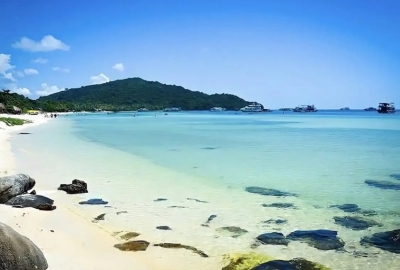

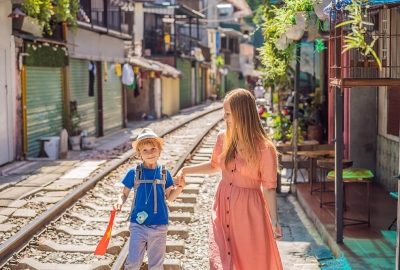

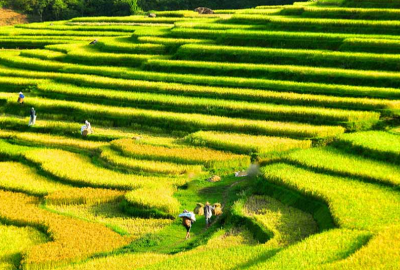

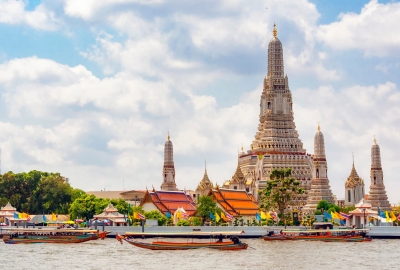


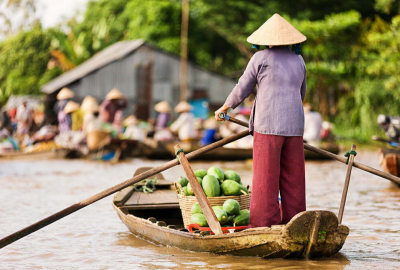
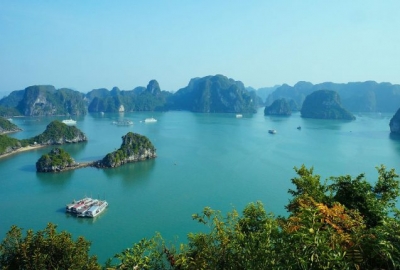
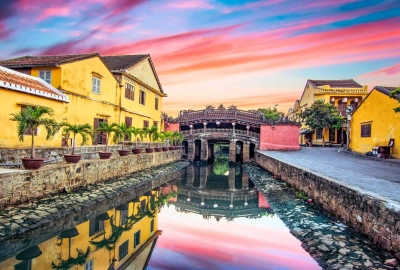
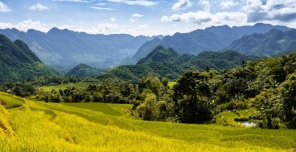
.webp)

